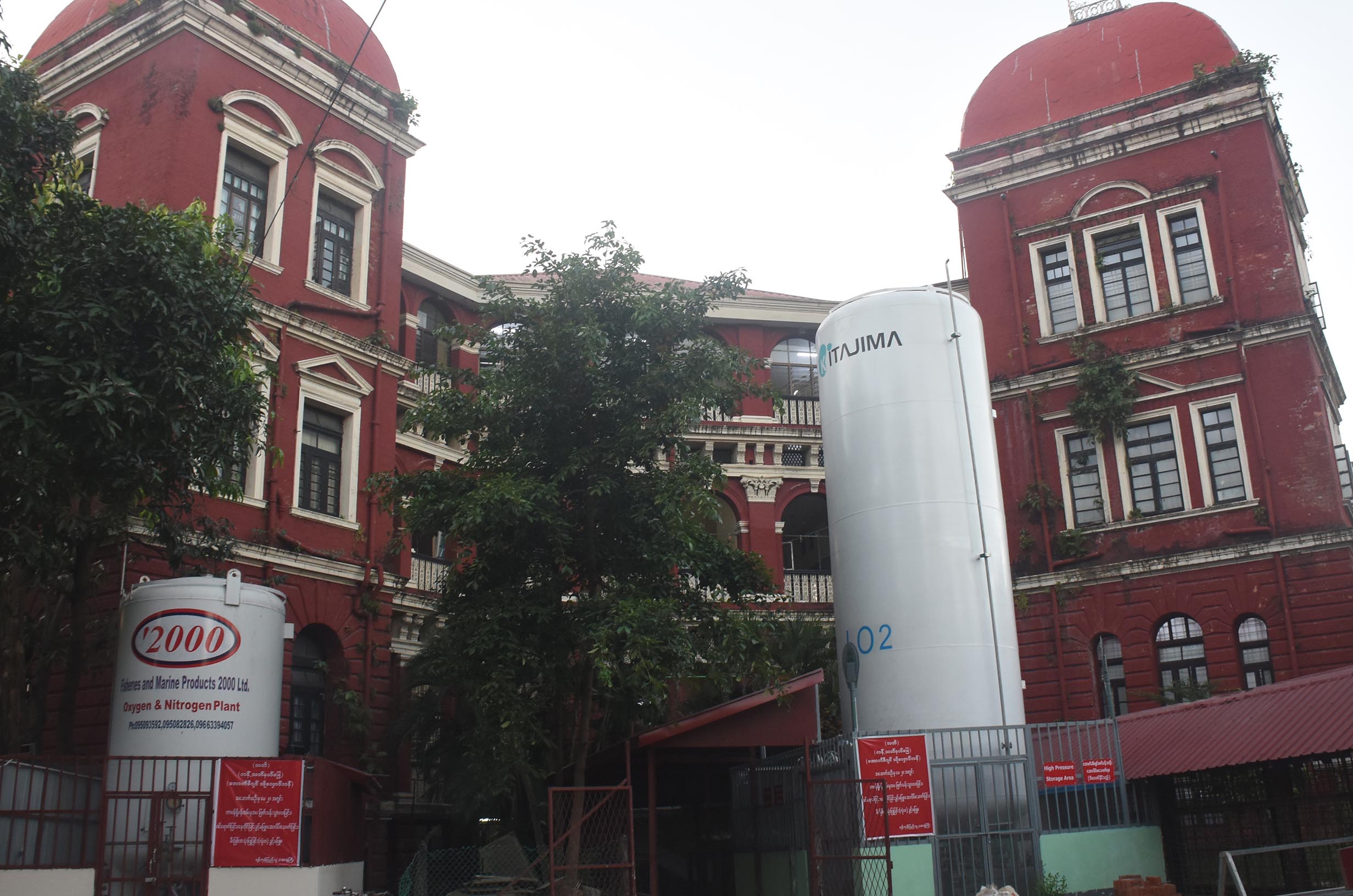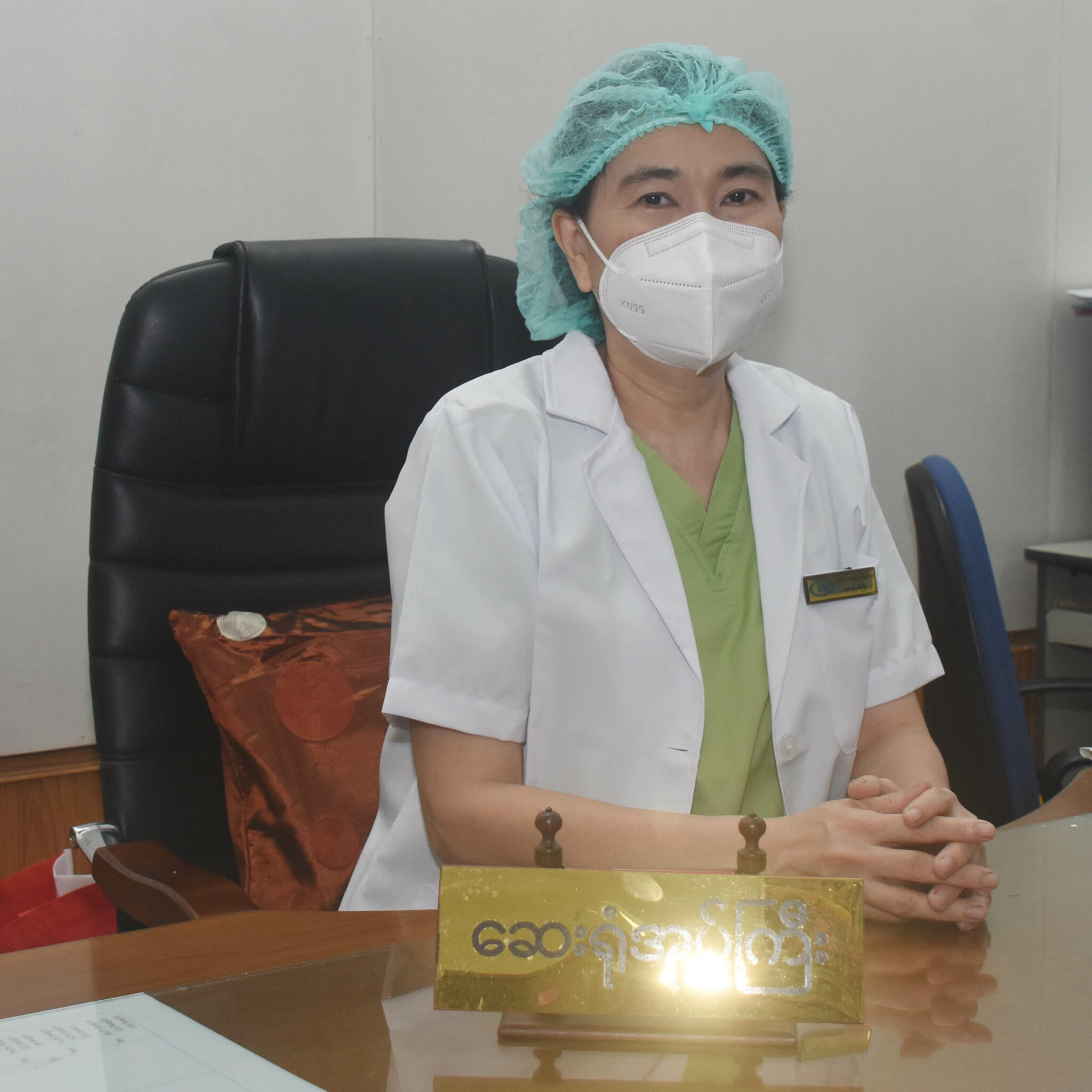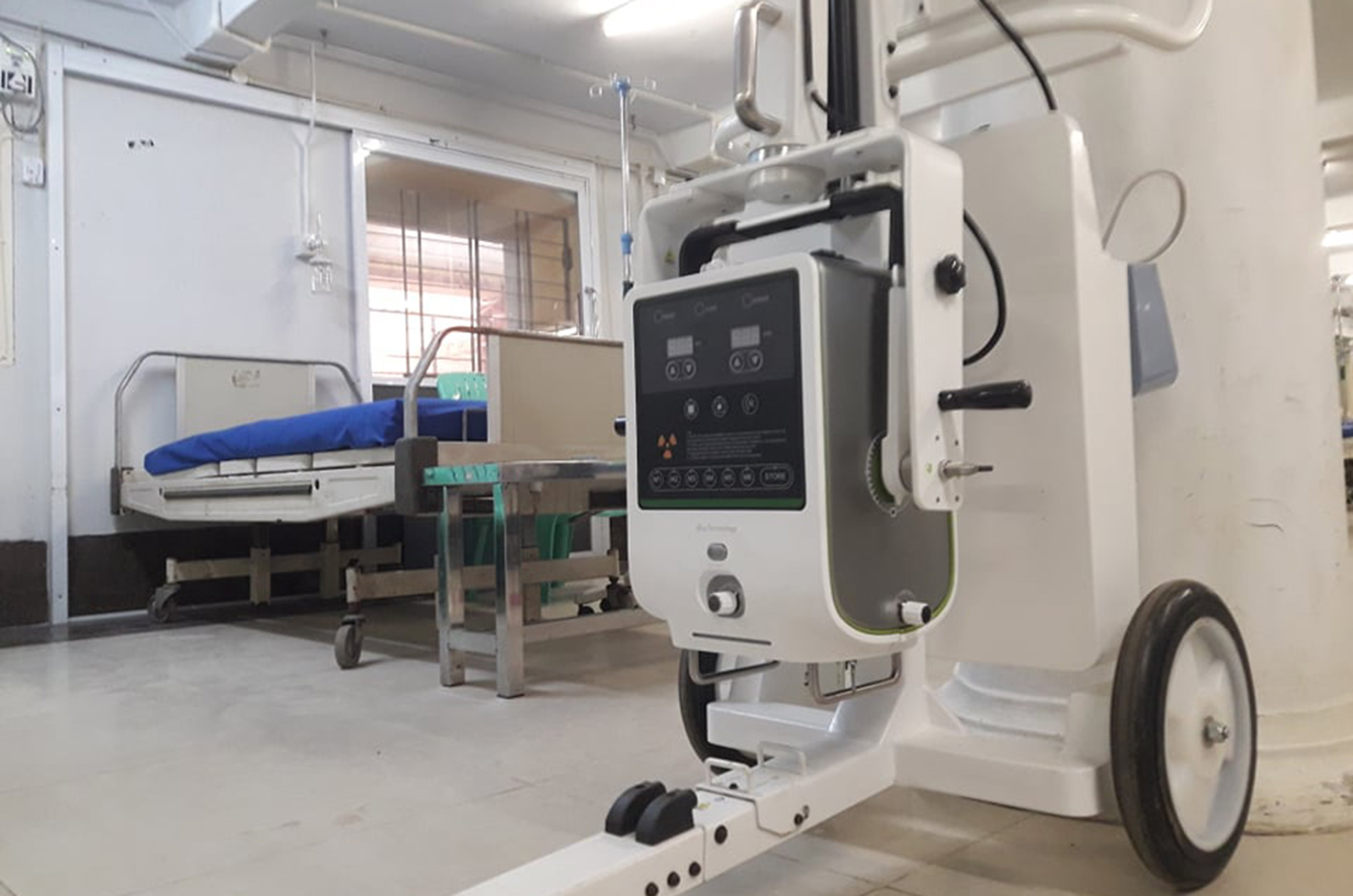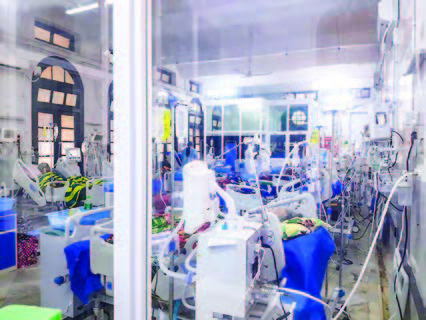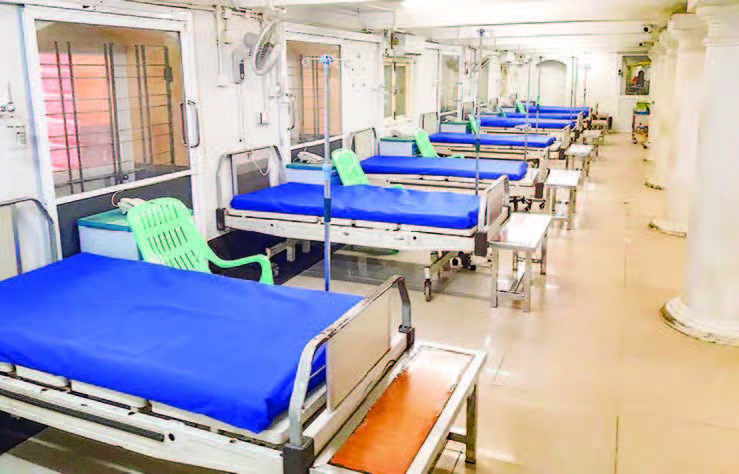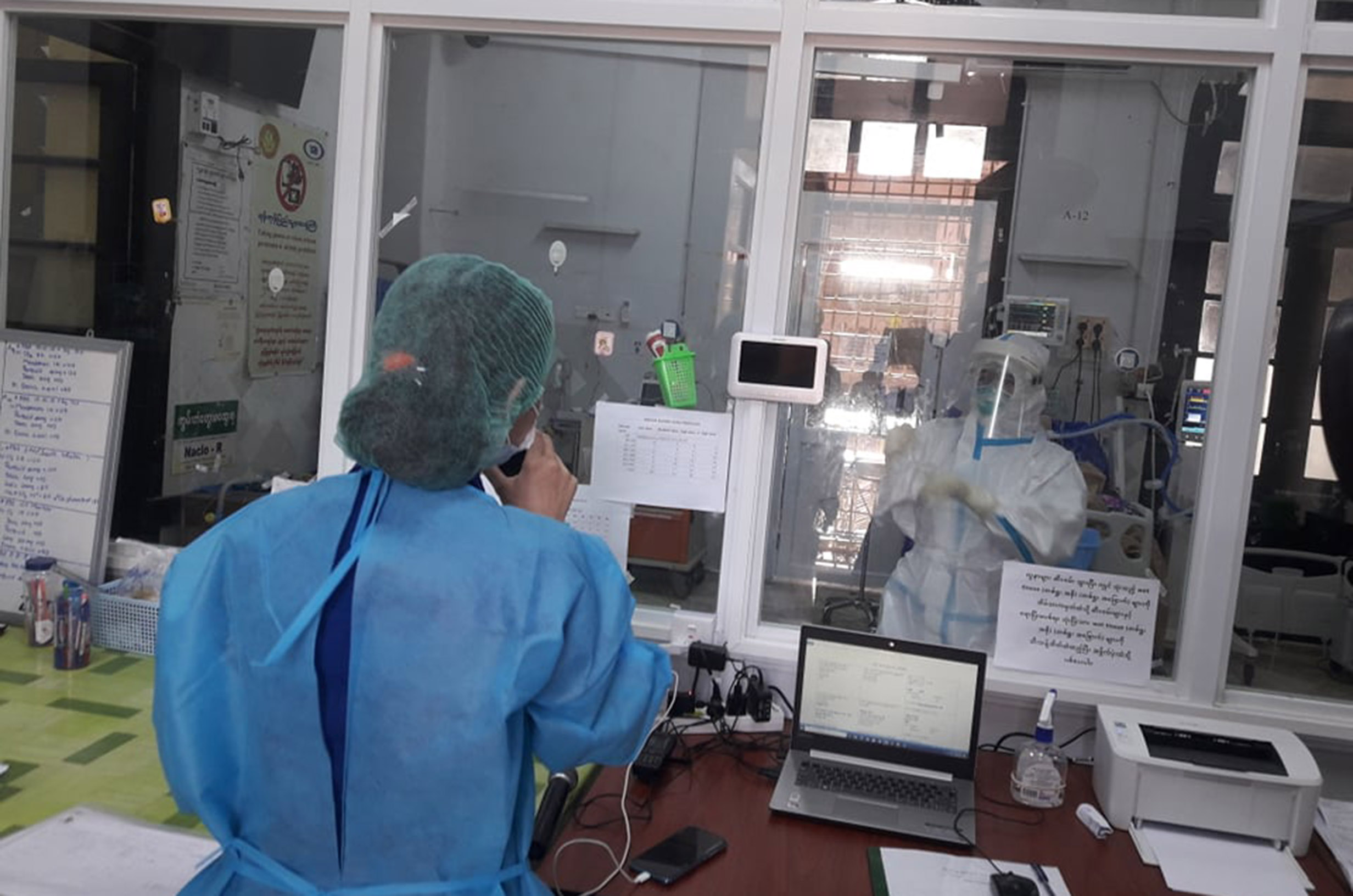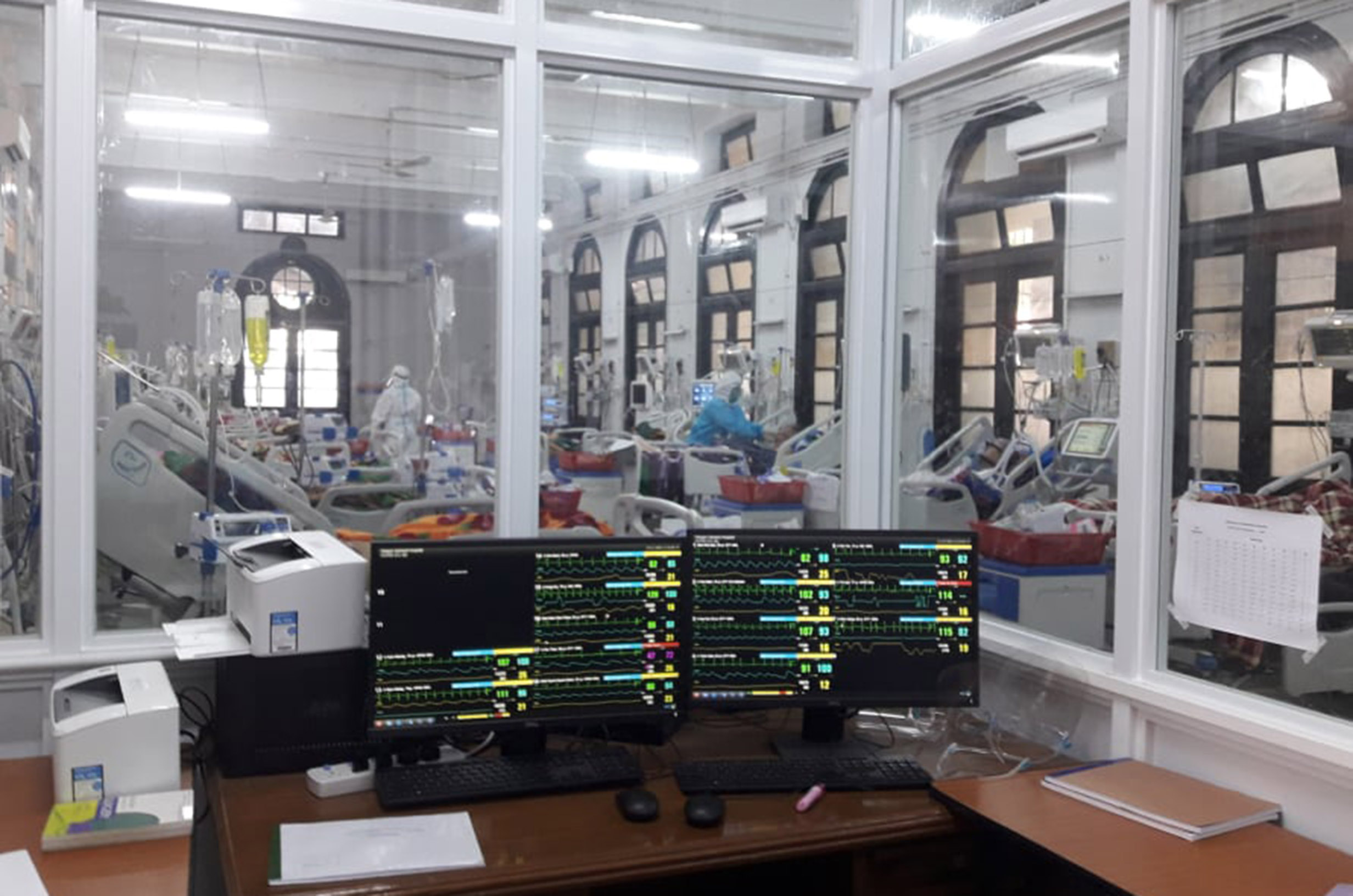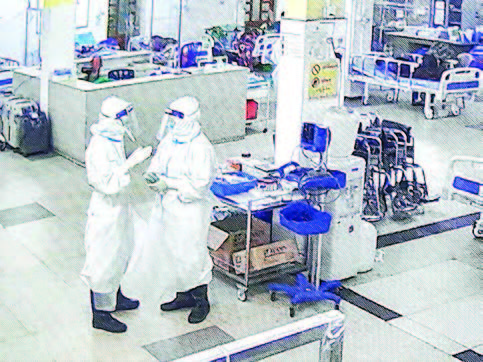(CONTINUED FROM YESTERDAY)
The spread of COVID-19 has spiked since the second wave hit Yangon Region and the Ministry of Health and Sports has set action plans to mitigate the spread of the disease.
Myanmar News Agency has interviewed Dr Tun Myint, Deputy Director-General of Yangon Region Public Health and Medical Services Department, and Dr Myint Myint Aye, Medical Superintendent of Yangon General Hospital, on the situation.
[Dr Tun Myint]
Question: Why has the number of cases and deaths increased in Yangon Region?
Answer: The number of cases started increasing after 17 August. We were able to handle the situation in the first wave because of the low infection rate. The majority of cases there were imported from returnees.
In the second wave, the infection rate went up after positive case no.375 on 17 August. We can estimate this is because of an influx of people from other states and regions, especially from the west, entering Yangon. We can guess how many people travelled to Yangon after a month and most of them live in Yangon Region as well.
There are also people passing through Yangon Region to get to other states and regions. We can see a rising number of cases there too, but the Yangon Region still has the highest infection rate due to its dense population. In here you have the situation with migrant workers, factories and markets which are particularly linked to different regions with Yangon. Since Yangon is accepting of everyone, it has the most number of COVID cases as well.
We also have to increase awareness among the public and have them maintain distance, wear masks, wash hands and prevent large gatherings. COVID-19 cases will likely go down when everyone follows the health guidelines issued by the Ministry of Health and Sports.
Question: Can you tell us more about the social movement for COVID-19?
Answer: We can’t put a stop to COVID by only giving medical treatments in hospitals. This is where public health services and action plans have to be increased. They need to be carried out in the frontlines, and so we have drawn up a campaign for social activities in Yangon Region.
There are three categories. The first is the mandatory wearing of masks and face shields in dense public locations such as markets, shopping malls, highway terminals, jetties and airports. We are starting this in the markets and starting from 15 November; we’ve distributed face masks and shields to 120 markets of the 176 in Yangon. Both vendors and buyers have to wear them, and we will provide for them if they are not wearing any. MoHS has supplied us with 1 million face masks and 100,000 face shields, and we will distribute them at the markets.
The second category is incorporating educational activities during the distribution. We’re using megaphones to spread information five times a day in the markets and wards. We provide daily updates, health guidelines and some famous artists will be entertaining with informative music. The third category is giving out pamphlets and we have printed 500,000 already. In addition to health guidelines, we are adding the do’s and don’ts for vendors and buyers of Yangon Region’s markets into the pamphlets this time.
We have made the clearest notice to the public, and we hope these three categories will help cut the spread of COVID-19 and reduce related deaths.
[Dr Myint Myint Aye]
Question: Can you tell us the preparations Yangon General Hospital has made to treat COVID-19 patients.
Answer: The hospital was not treating COVID patients at first. We simply accepted people suspected to have COVID and transferred the positive patients to designated hospitals. But there are more cases in the second wave, so we had to prepare the red ward to treat positive patients. We made preparations starting from the emergency ward to the waiting rooms and even near the entrance.
The emergency surgical ward was prepared for operating on COVID positive patients, and we had to make a new ward in case more patients arrived. The entire main red building was prepared for COVID patients with suspected patients put at the ground floor, and the orthopaedic ward now has ICUs and HDUs for 30 patients.
We can now monitor those 30 patients from our control room. We’ve made preparations to accept more patients and we’ve prepared four kidney cleansing machines for positive patients with kidney ailments.
Those were the initial preparations. Later, we have positive patients coming to the hospital and they want treatment from Yangon General Hospital. More patients came in after we assembled more medical equipment and now we’re building a new ward in front of the main building. It’s still in progress but it will house up to 80 patients once it’s done.
We are using full medicine and equipment we have to treat our patients. We’ve installed a machine that produces liquid oxygen since it’s the main necessity for these patients. We didn’t have oxygen pipelines at each bed, but now we are doing our best to supply oxygen to everyone.
About 40 patients passed away per day before, and we’ve opened a special ward with 30 beds at the Yangon General Hospital and a 20-bedded ward in North Okkalapa Hospital. This has reduced the fatality rate and, it’s also thanks to the physicians and anesthetists.
It’s been tiring, but thanks to the professionalism and compassion of our medical personnel, we’ve had positive patients over 70 and 80 years of age discharged on the complete recovery. Our hospital is accepting patients with the most severe cases, so we are experiencing both recoveries and deaths.
Interviewed by Min Thit (MNA)
Photos: Zaw Min Latt (MNA)/ Kyaw Zeya Win
#The_Global_New_Light_of_Myanmar

